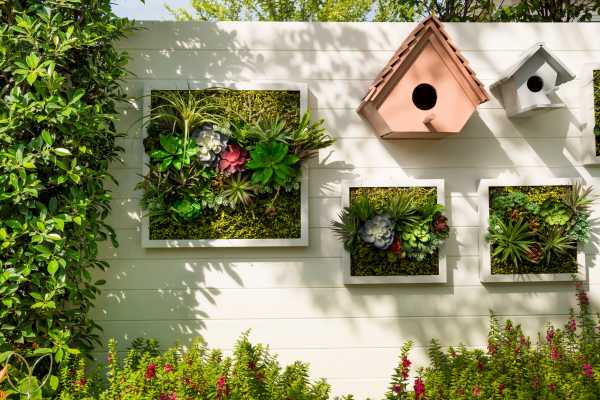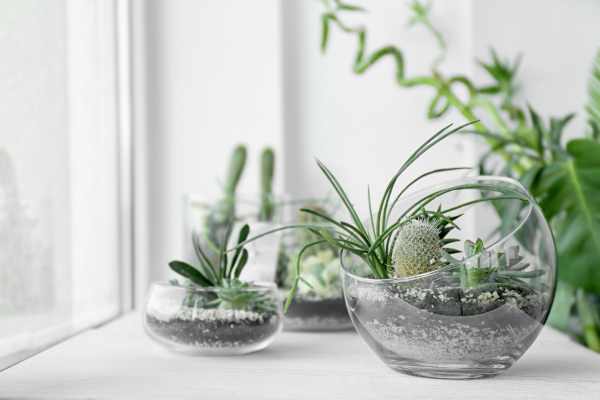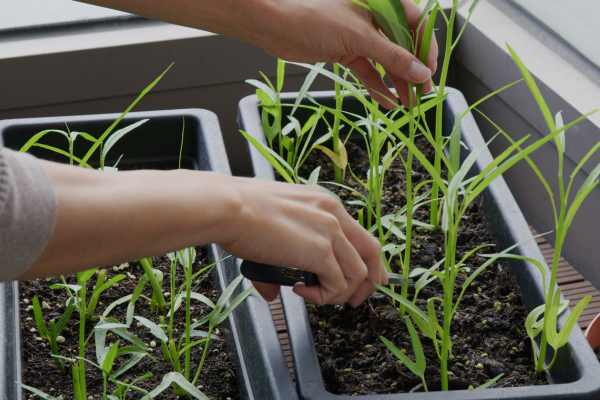Embracing the tranquility and beauty of a flourishing garden doesn’t have to be sacrificed when opting for a tiny house lifestyle.
Indeed, cultivating a garden within a limited space can be a gratifying pursuit, offering a verdant sanctuary right at your doorstep.
In this discourse, we delve into the art of fashioning a miniature house retreat amidst the foliage, allowing you to immerse yourself in nature, unwind, and discover serenity within the confines of compact living quarters.
This feat is achievable within the realms of a tiny abode, irrespective of expansive grounds.
The Allure of a Compact Garden Space
The allure of tiny house living has surged in popularity as individuals seek avenues to streamline their lives and lessen their ecological footprint.
Despite the modest proportions they offer, tiny houses present a distinctive opportunity to forge a more intimate bond with nature.
By integrating a garden into your tiny house lifestyle, you can foster a more pleasant living environment and significantly enhance your overall well-being.
Strategizing Your Garden Layout for Your Tiny House
Assessing Your Surroundings:
The initial step entails evaluating the available space surrounding your diminutive abode. Whether it be a small plot of land, a balcony, or even a windowsill, every inch of space harbors the potential to evolve into a verdant haven.
Selecting a Garden Design Tailored to Your Dwelling:
Before embarking on your endeavor, contemplate the type of garden you wish to cultivate. Are you drawn to a bustling garden, a thriving vegetable patch, or a tranquil Zen-inspired oasis?
Opt for a design that not only resonates with your personal preferences but also complements the aesthetic of your tiny home.
Choosing Appropriate Flora:
Every plant plays a pivotal role in the overall prosperity of your petite garden. Opt for flora that flourishes in your local climate conditions and necessitates minimal maintenance.
Herbs, succulents, and dwarf fruit trees stand as exemplary choices for gardens constrained by space.
Implementing Vertical Gardening Techniques:
When horizontal space is limited, capitalize on verticality! Vertical gardening not only maximizes the utilization of available space in your petite yard but also bestows a unique aesthetic appeal.
Utilizing Hanging Planters and Trellises:
Plants requiring support to ascend, such as tomatoes, cucumbers, or trailing blossoms, can be cultivated in wall-mounted pots or trellises.
This not only conserves space but also creates a living tapestry that enhances the allure of your secluded retreat.
Elevating Your Garden:
Pots suspended from above can exploit the overhead space, facilitating the creation of a vertical herb garden. This not only minimizes ground footprint but also yields an eye-catching display.
Furnishing Your Tiny Outdoor Oasis:
Envision a cozy nook adorned with seating and embellishments to optimize your outdoor leisure.
Nestled Nook:
Curate a cozy ambiance by outfitting a modest seating area with plush cushions and throws, enabling you to unwind and bask in the natural milieu.
Space-Efficient Furniture:
Select furnishings that fold or stack for effortless storage, allowing for flexible and efficient space utilization.
Integrating Water Features:
Infuse tranquility into your petite garden with the soothing melody of water cascading over rocks.
Miniature Fountains:
Installation of miniature fountains or petite ponds imparts a serene ambiance while attracting avian visitors and other beneficial fauna.
Establishing a Drip Irrigation System:
Implementing a rudimentary drip irrigation system facilitates the watering of your plants while minimizing water wastage and ensuring their vitality.
Nurturing Your Petite Garden:
Small-scale gardens may necessitate additional upkeep to sustain lushness and vitality.
Adhering to Regular Pruning and Trimming Regimens:
Exercise control over your plants by adhering to routine pruning and trimming to foster robust growth and maintain desired aesthetics.
Utilizing Mulch and Compost:
Employ organic mulch to curtail water loss and suppress weed proliferation, while enriching your garden’s soil through composting kitchen scraps.
The Benefits of a Garden within Your Tiny House Abode
Enhanced Relaxation and Health:
Surrounding oneself with verdure has been scientifically proven to mitigate stress, reduce blood pressure, and augment overall well-being.
Access to Fresh Produce and Herbs:
Cultivating your own herb and vegetable garden enables a reduction in your family’s carbon footprint while granting immediate access to locally sourced, organic fare.
Rekindling a Connection with Nature:
Establishing a modest vegetable plot within an urban landscape facilitates a reconnection with and appreciation for the natural world.

Conclusion:
The Tiny House Garden Retreat eloquently showcases the transformative potential of ingenuity and the splendor and diversity of nature.
Embrace the allure of tiny house living by metamorphosing even the most petite space into a verdant sanctuary. Revel in the tranquility and contentment afforded solely by a home garden of this stature or smaller.
Keep reading our articles:
Maturing: Tips on Vertical Gardening for Residents of Small Dwellings
Cultivating a Green Oasis in Compact Living
FAQs:
1. Can a garden be cultivated on a diminutive balcony?
Absolutely! Even the most compact balcony can be metamorphosed into a picturesque garden through the utilization of vertical planters, suspended baskets, and compact furnishings.
2. What are some low-maintenance plants suitable for a petite home garden?
Succulents, lavender, mint, and rosemary stand as low-maintenance flora thriving in confined spaces and demanding minimal care.
3. How can I render my tiny house garden eco-friendly?
Adopt organic gardening methodologies such as composting, mulching, and rainwater harvesting to minimize environmental impact.
4. Can vegetables be grown indoors in tiny houses?
Indeed, vegetables can be cultivated indoors utilizing containers, grow lights, and adequate ventilation. Leafy greens and herbs are particularly conducive to indoor gardening.
5. Can tiny house gardens attract wildlife?
Certainly, a diminutive garden can allure birds, butterflies, bees, and other beneficial insects, fostering biodiversity and a flourishing ecosystem.


